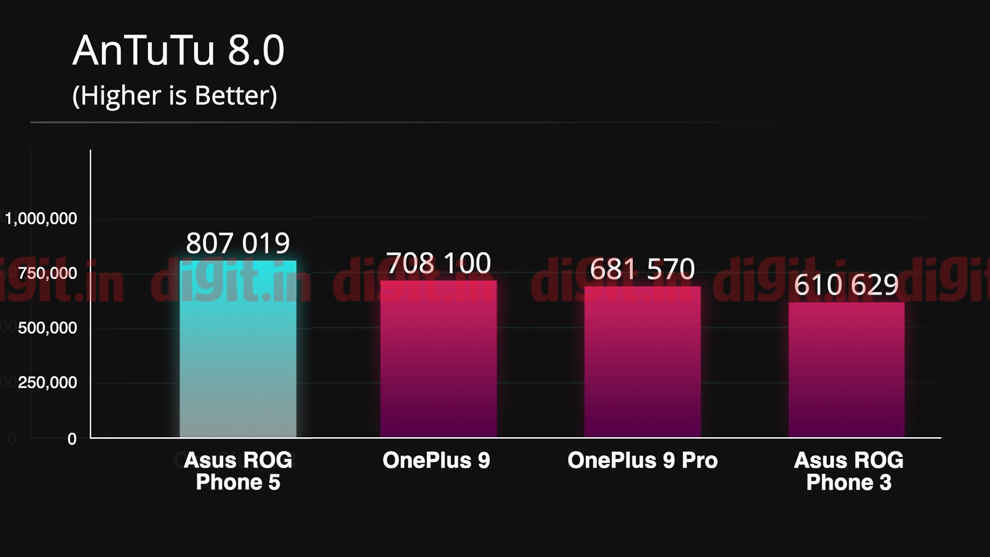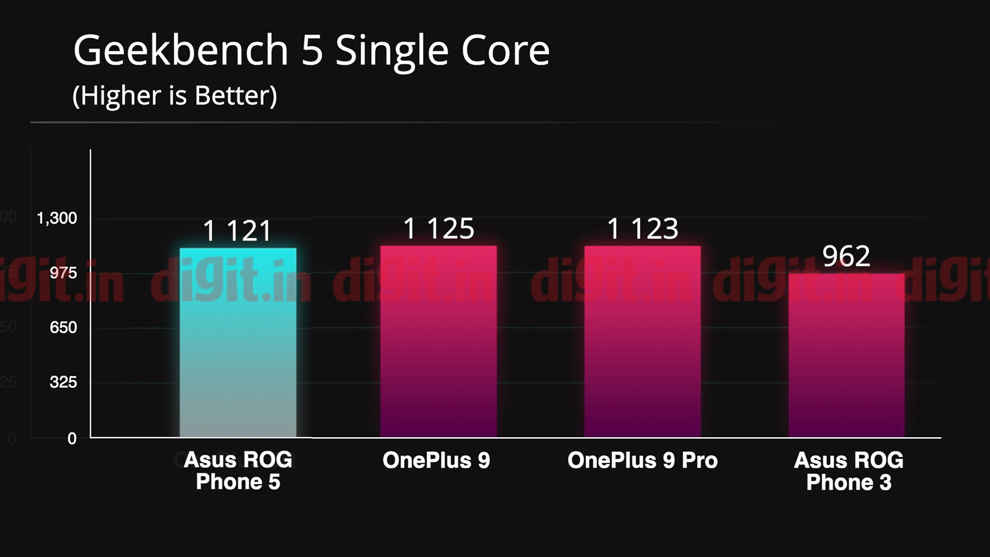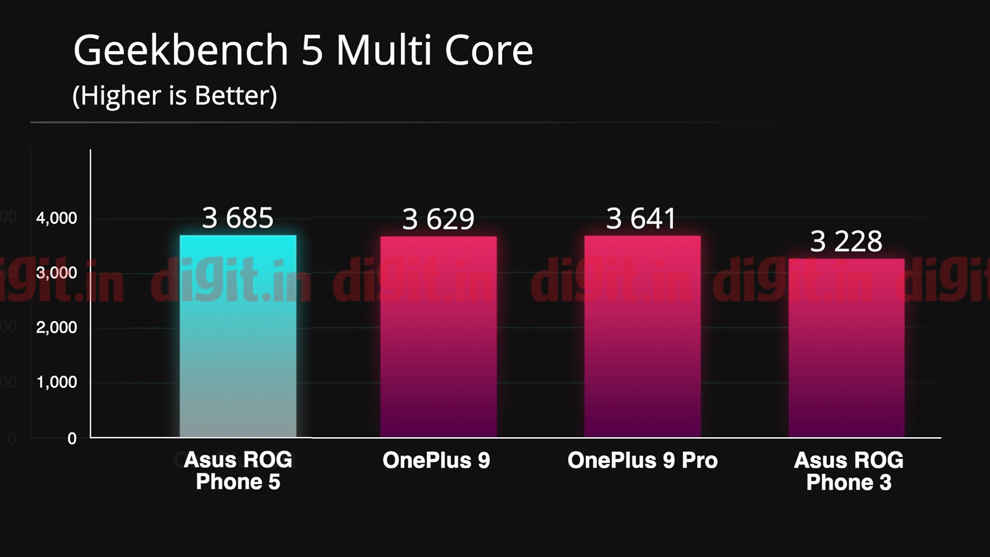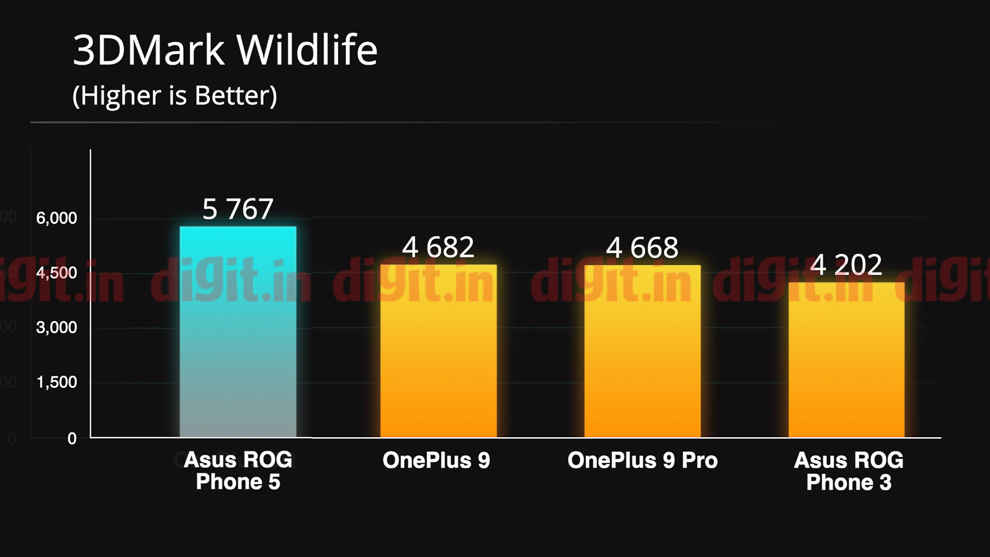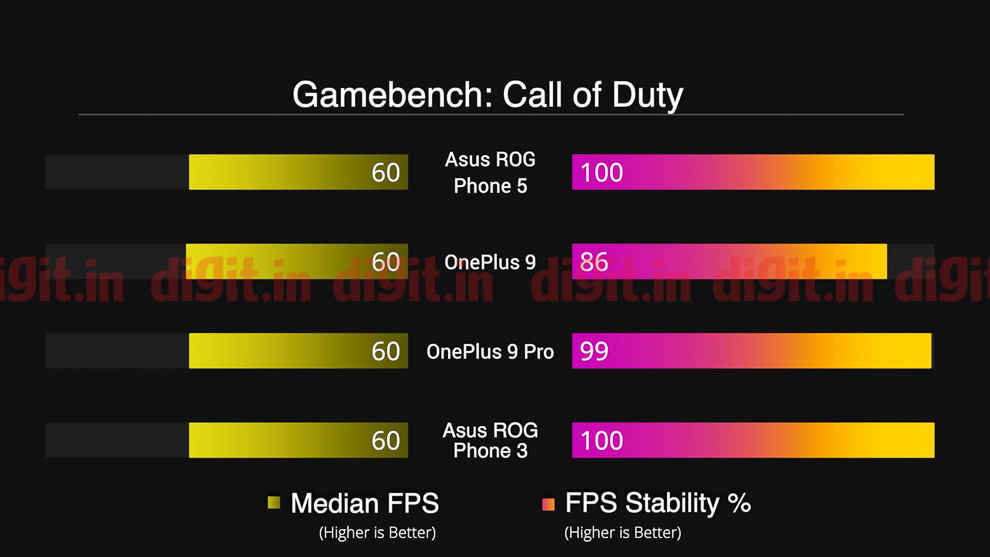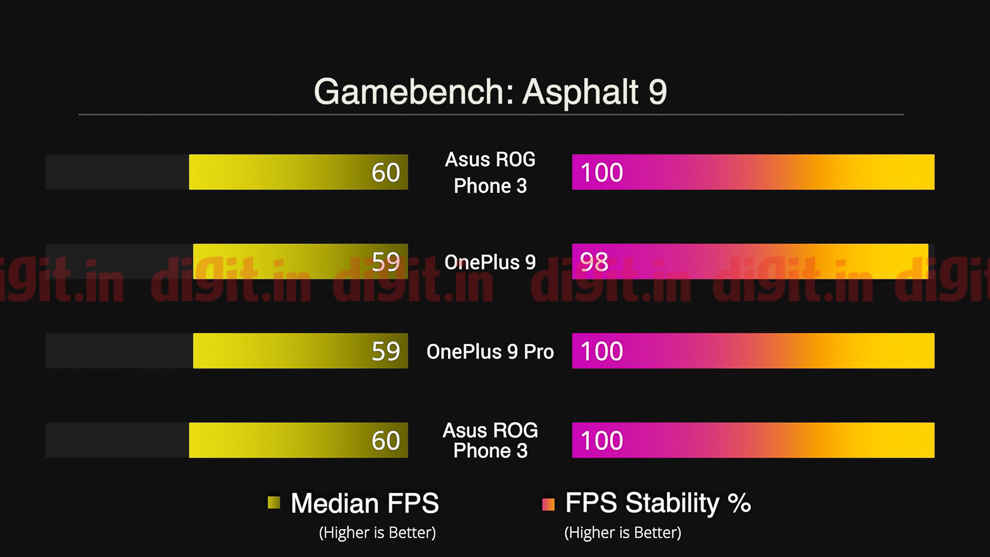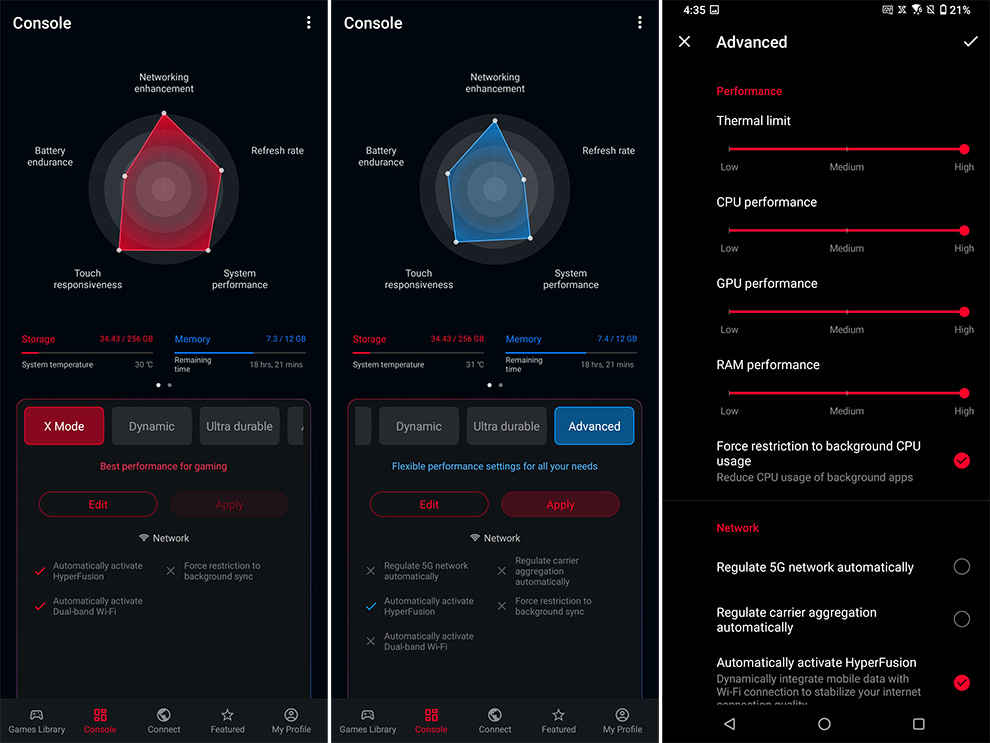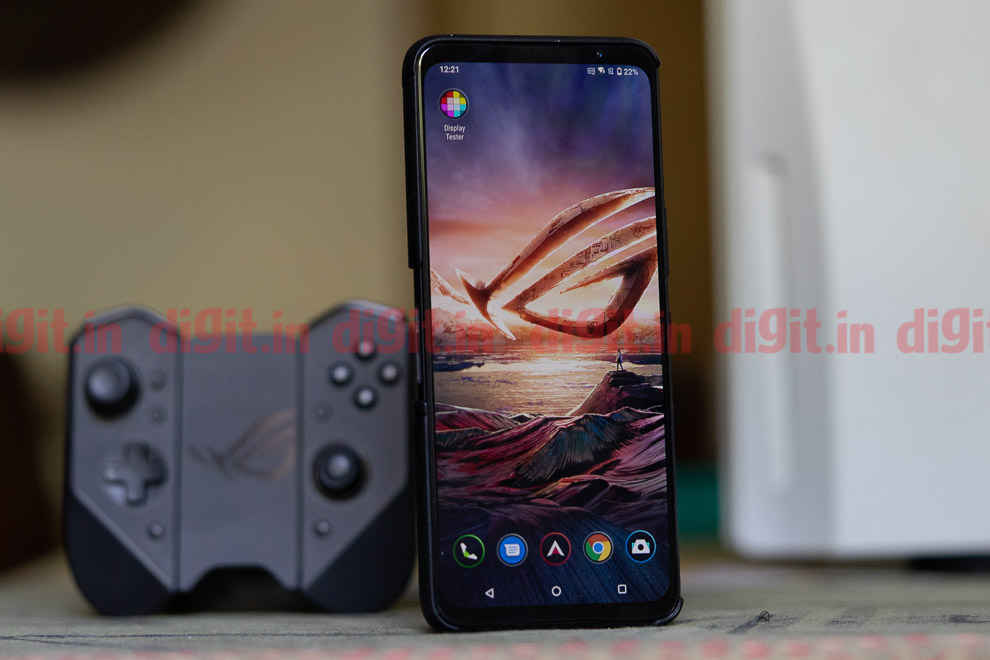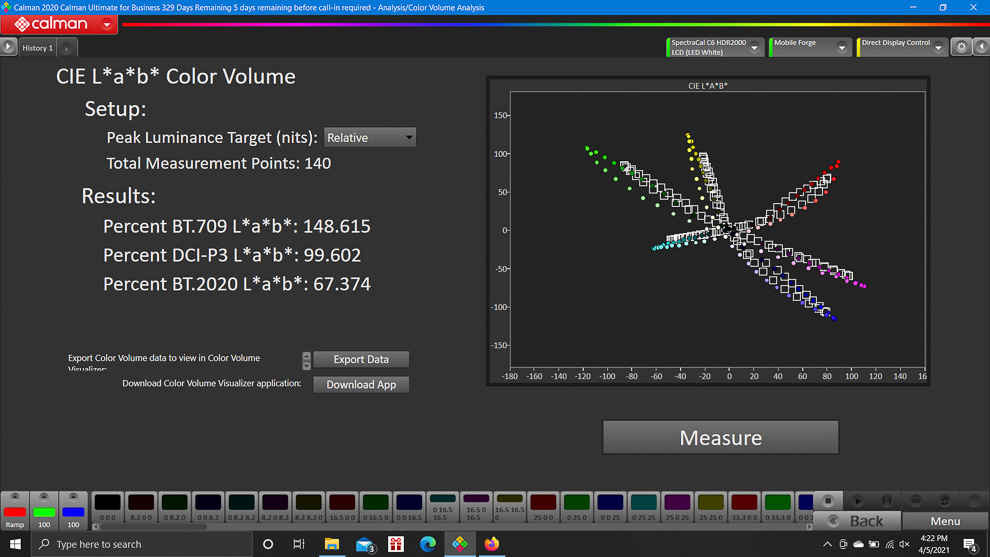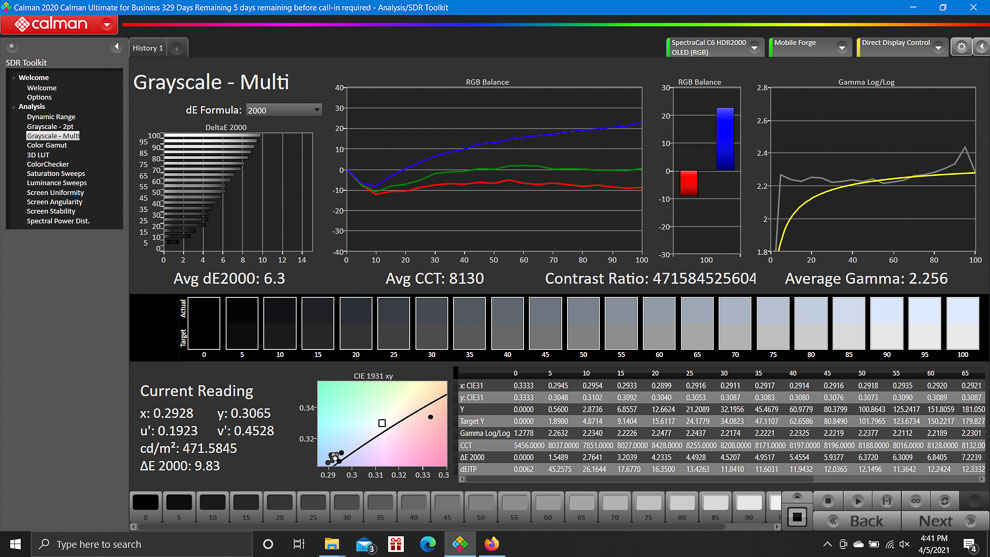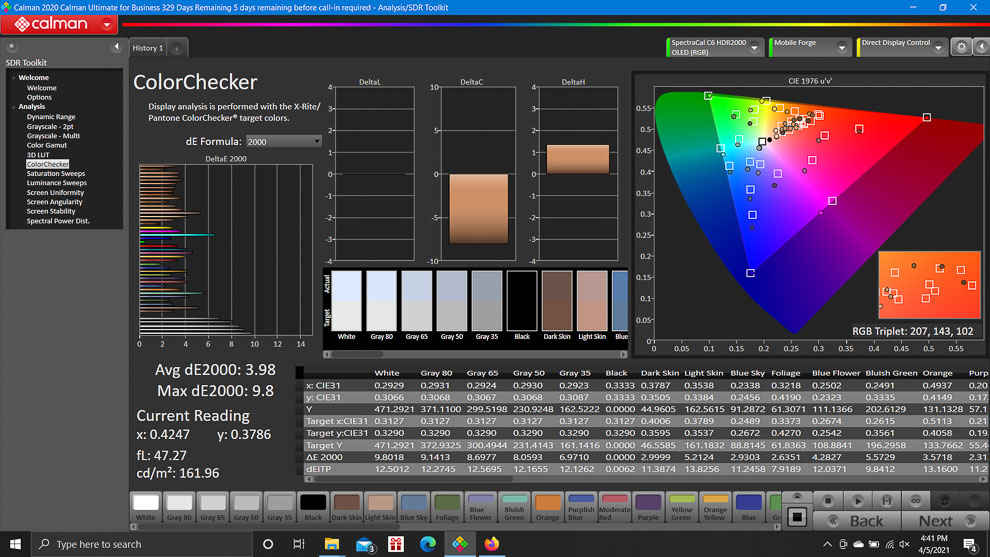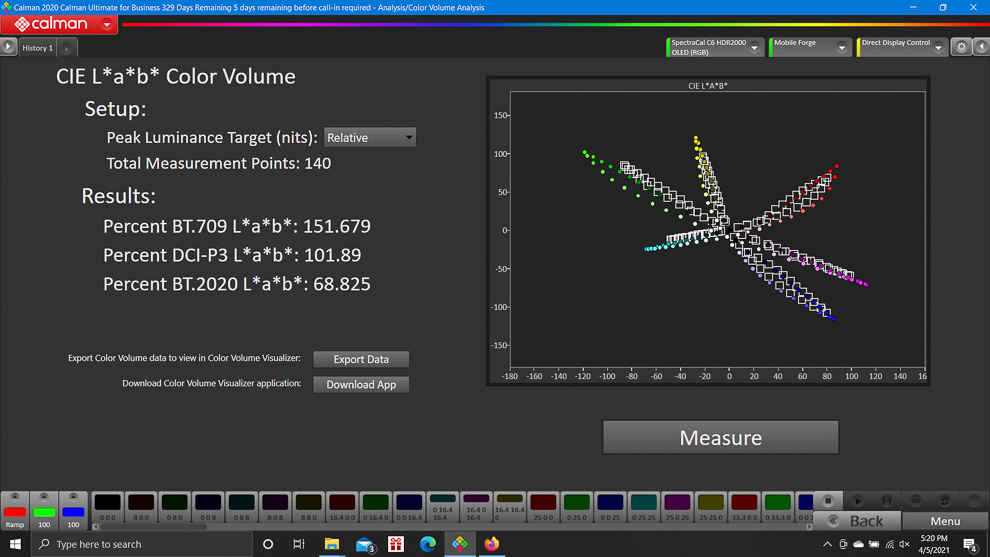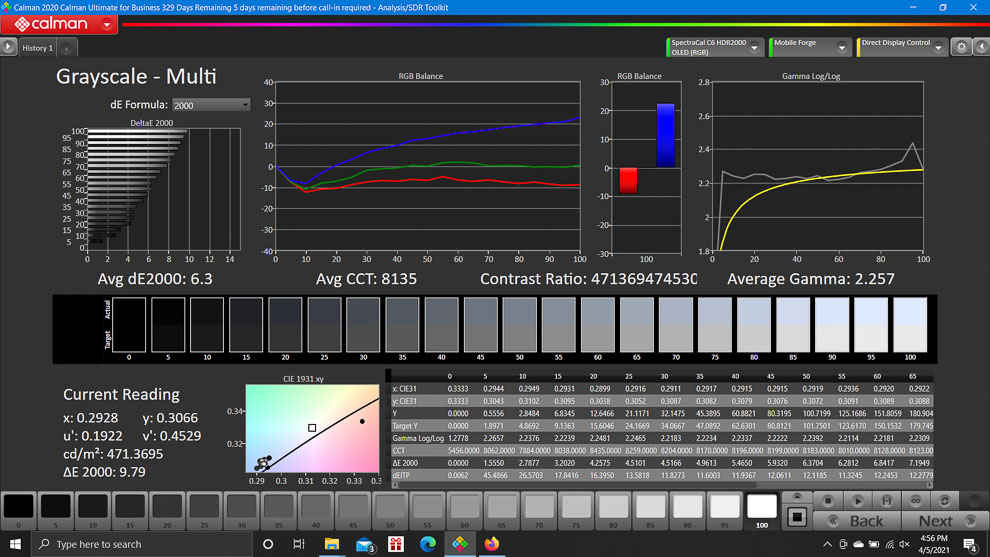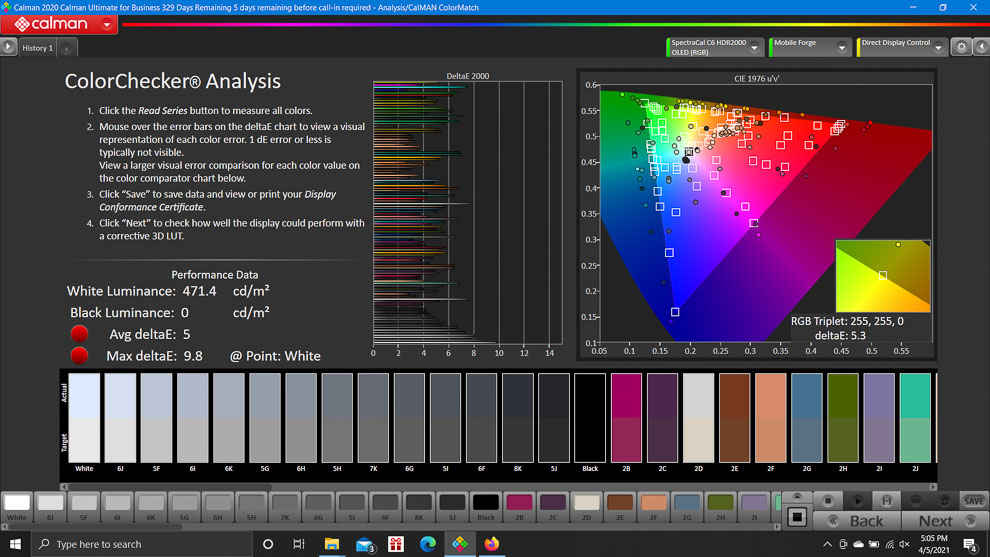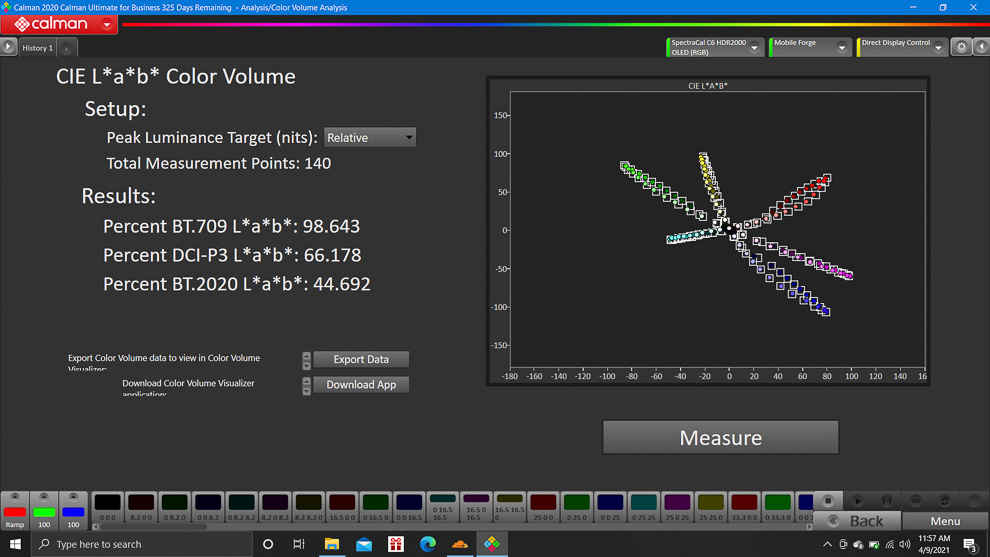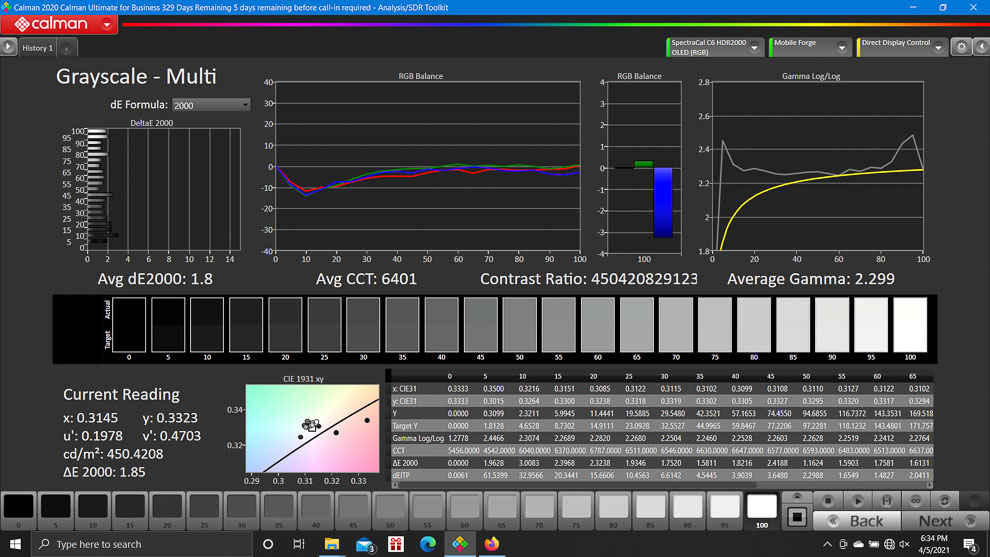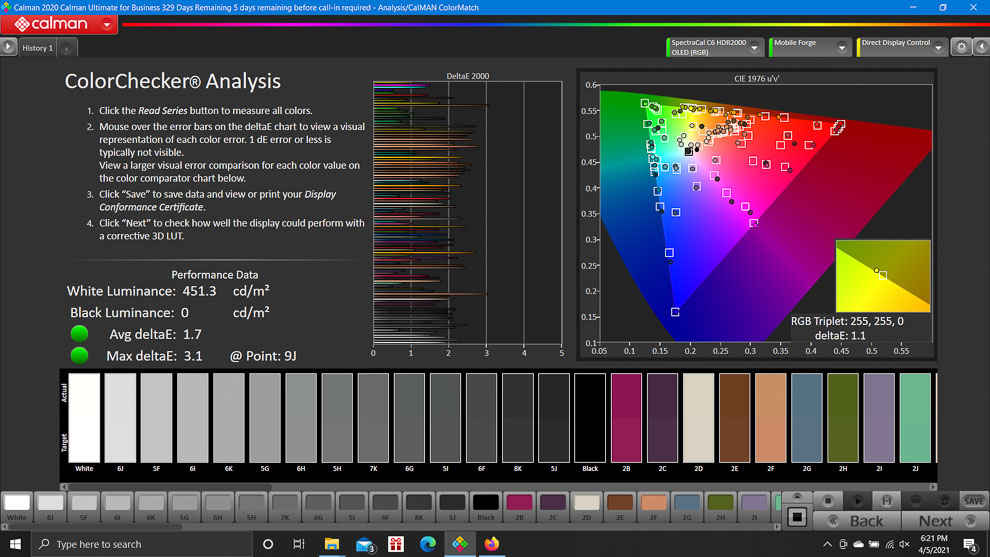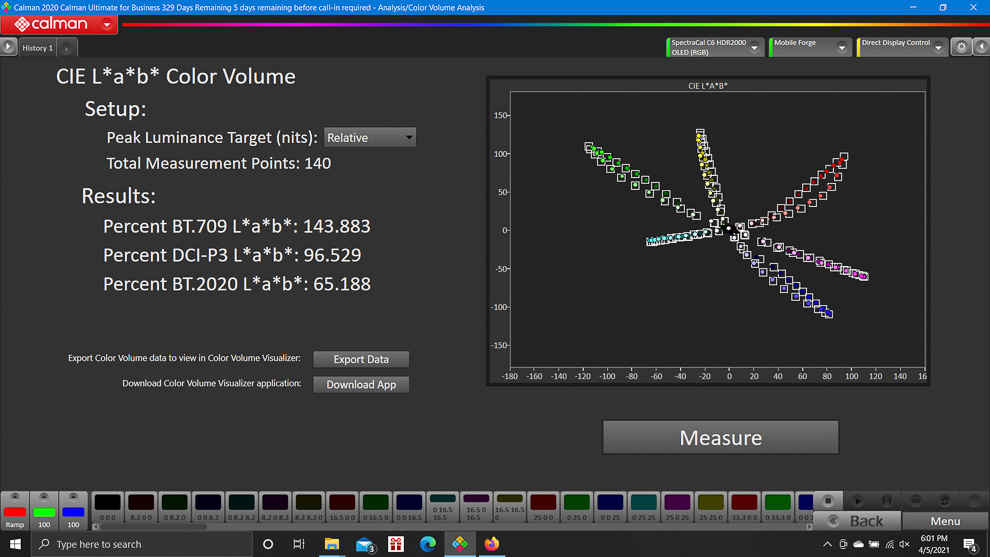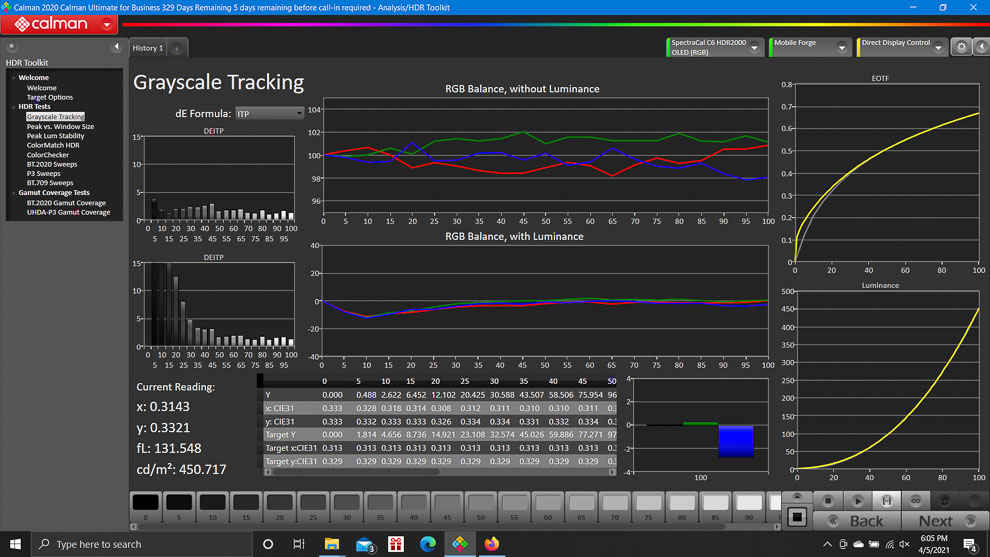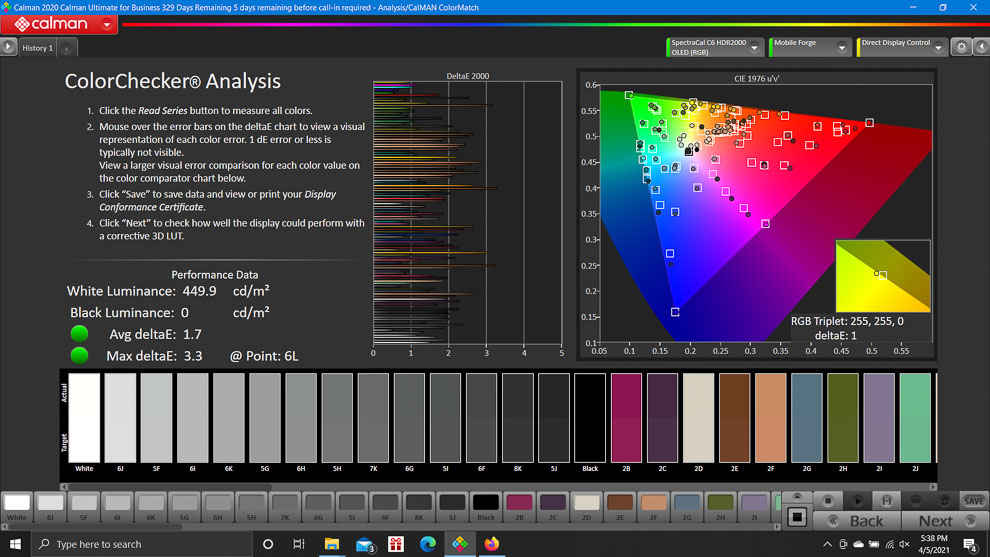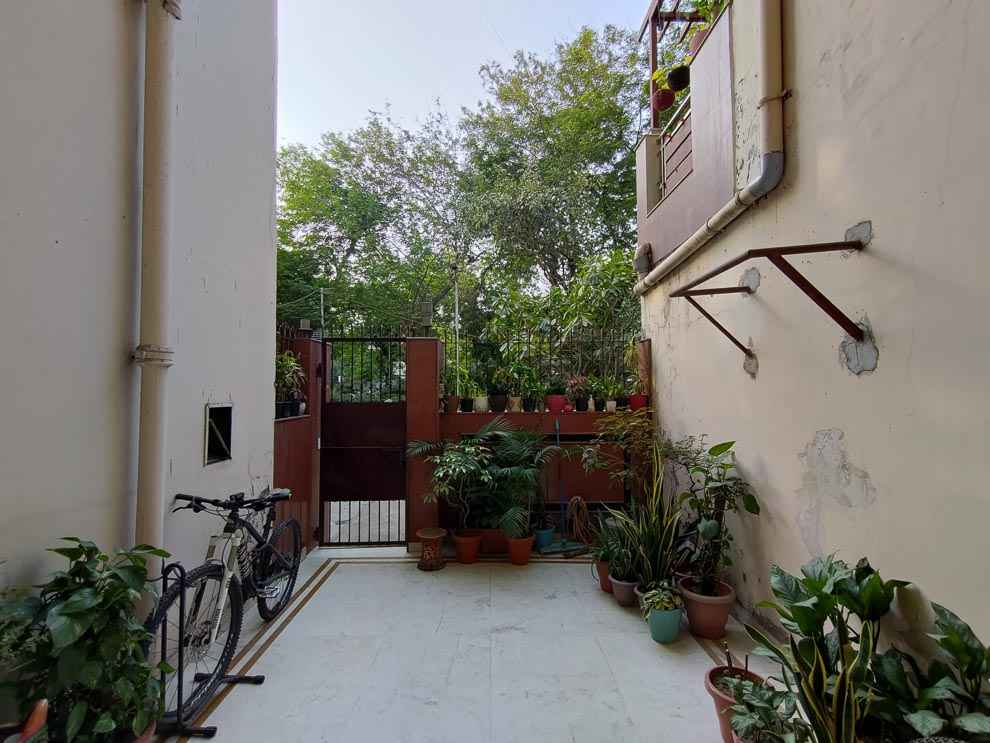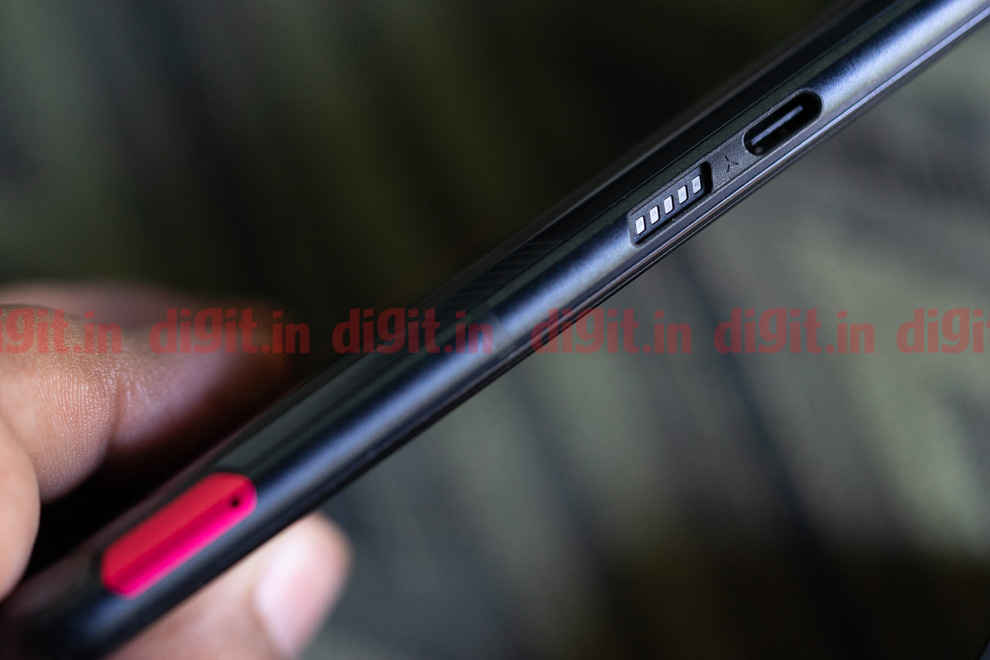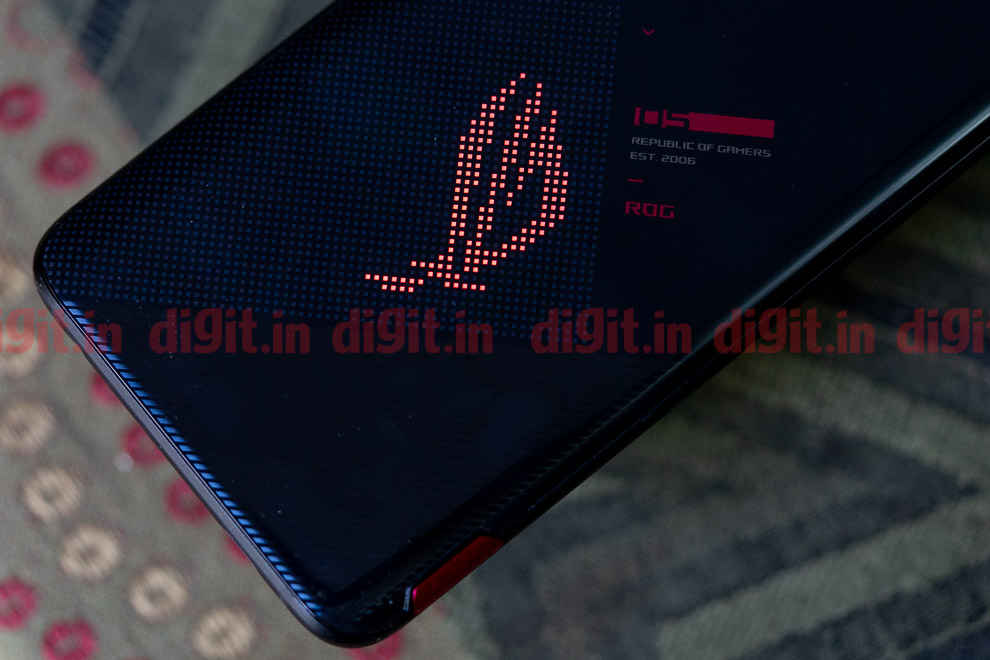Asus ROG Phone 5 Review : Gaming to the Max
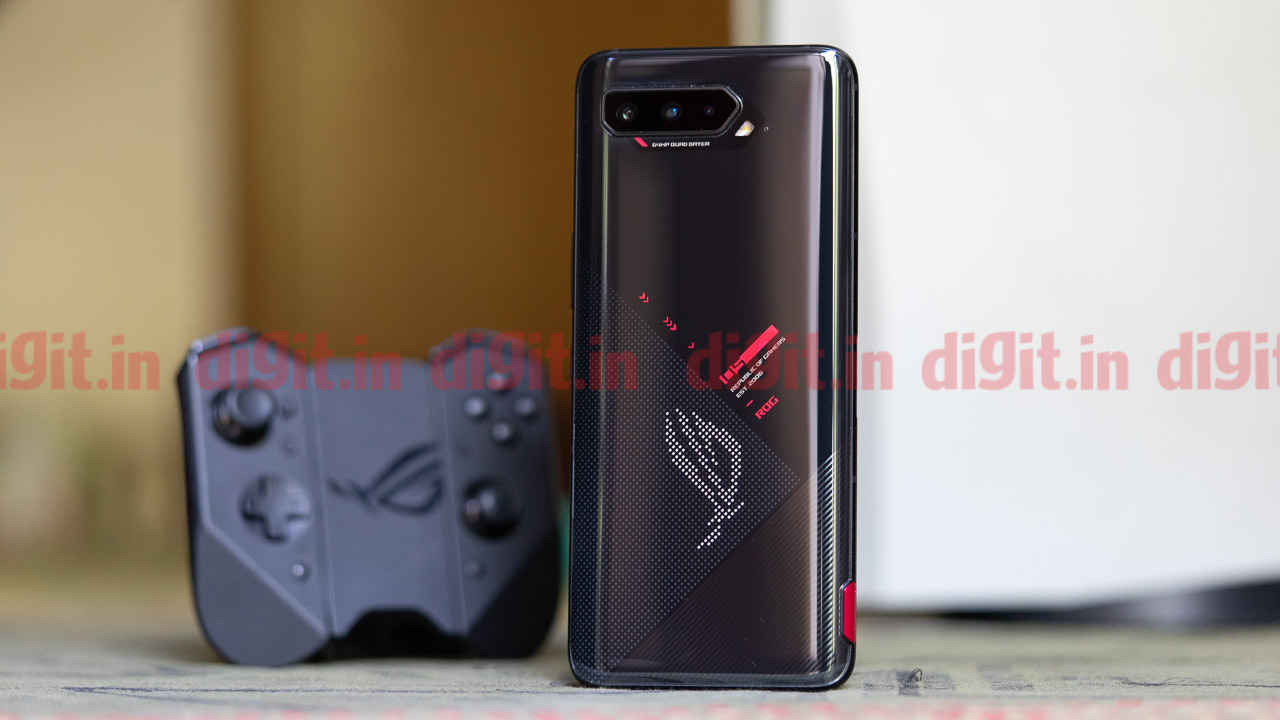
Asus continues its focus on gaming phones by releasing the ROG Phone 5, the fourth smartphone in the series. As much as the company may have tried to make the ROG Phone 5 for everyone, it still remains a gaming phone first, with most of the features being of little to no use for non-gamers. The air triggers work with little to no latency while the addition of trigger buttons to the AeroActive cooler is definitely going to shave some milliseconds off your aim-shoot game. The display offers an astounding refresh rate of 144Hz on an OLED panel, which is very impressive. the colour accuracy is also pretty good on two of the four display profiles. Unfortunately, the ROG Phone 5 fails to be more than a gaming phone, with its mostly average camera, lack of IP rating and the fact that the hardware that powers the ROG Phone 5 can now be found in other smartphones as well. Given the rise in popularity of mobile-based gaming tournaments, the ROG Phone 5 makes perfect sense for the competitive gamer or even a casual gamer for that matter. But for anyone who was looking for a well-rounded package, the ROG Phone 5 ain't the one.
Asus’s ROG division has a notorious reputation for producing some of the most ridiculous products. Their motherboards, PC cases, accessories and now smartphones continue to sport the most head-turning designs. The Asus ROG Phone 5 continues that tradition, while also being engineered with gaming in mind. This year, the ROG Phone 5 doesn’t get a special chipset like last year, but instead, is infused with a boatload of features that are designed to make your gaming experience and performance top-notch. Does the phone deliver on that promise? We find out.
Asus ROG Phone 5 Performance Review
The Asus ROG Phone 5 is all sorts of beastly when it comes to the hardware. At the heart of the Asus ROG Phone 5 is the Qualcomm Snapdragon 888, a chipset that’s also found on the OnePlus 9 Pro, OnePlus 9 and even the Vivo X60 Pro+. Our review unit also comes with 12GB LPDDR5 memory and 256GB of ultra-fast UFS3.1 storage. Interestingly, none of these pieces of hardware are unique to the ROG Phone 5 which is a bummer since the previous ROG phones included at least one unique component that no one else got. What this does is produce synthetic benchmark and real-world gaming performance numbers that are in line with other smartphones powered by the same hardware. You can see that in the charts below.
Where the ROG Phone 5 does excel over its similar spec’d brethren is with respect to throttling. After 15 minutes of running the CPU throttling test, the Snapdragon 888 on the OnePlus 9 Pro throttles down to 84 per cent while the same chipset on the Asus ROG Phone 5 throttles down to just 93 per cent. This speaks volumes about the new cooling capabilities of the Asus ROG Phone 5, and that’s without the new AeroActive cooler installed. This is not even with X-Mode enabled, which is a whole different beast, which we will get into.
Asus ROG Phone 5 Software Review
While the hardware on the ROG Phone 5 isn’t anything special, the engineers over at ROG have put in extra effort into the software that allows you to control the performance metrics. All of it starts with the Armory Crate software, which houses multiple profiles. You can choose between X-Mode, the most popular profile alongside Dynamic, Ultra Durable and Advanced. The advanced profile allows you to tweak the CPU-GPU and thermal limits, allowing you the very peak performance you’d want from this phone. Do note that if you do decide to use X-Mode or the Advanced profile with everything cranked up to 100. In the Armory Crate, you can control the fan speed of the AeroActive Cooler, set the preferences for the multitude of air triggers and motion control settings. This is the starting point of where the ROG Phone 5 starts to differentiate itself from the competition.
Asus ROG Phone 5 Gaming Features Review
This is the stuff that makes the ROG Phone 5 a gaming phone that outdoes every other smartphone in the market. The phone itself features the much loved ultrasonic triggers. This allows you to map on-screen buttons to these shoulder buttons, which comes in very handy when playing shooters. There are also motion control gestures as well, a whole 10 of them that you can configure. Personally, I have not yet found a game that would utilise them, but that’s not to say they’re not useful. Better to have it and not need it than not have it and need it. If the shoulder buttons we’re enough, this year’s AeroActive cooler gets two trigger buttons as well. I’ve found these to be my favourite mod for playing CoD Mobile, where it makes zooming through the reticle and shooting a lot simpler. Last but not the least, you’ve got the Kunai GamePad 3, which essentially converts the ROG Phone 5 into a handheld gaming console, very similar to the switch. The only exception is, the Kunai GamePad controller 3 comes with far too many buttons that you’d know what to do with. The cool thing about this GamePAd is also the fact that you can either slot the phone into it or use the controllers docked to its battery cradle, turning into an Xbox-like controller. You could potentially run a USB-C to HDMI converter from the USB-C port on the AeroActive cooler and get the output on your TV. We managed to game for a while on our LG CX 48-inch OLED with the ROG Phone 5 as the source, and while the visuals do look amazing, there is a slight delay in the video signal being relayed from the phone to the TV. Hopefully, Asus can fix this with a software update. The previous generation ROG Phones had a mobile gaming dock accessory that allows you to get the output on a monitor/TV and also use a keyboard-mouse combo for gaming. Unfortunately, that accessory gets no mention time around, leading us to believe that the implementation was less than perfect.
While all these different controllers, buttons and gestures can feel intimidating, the software experience of mapping them to a function is surprisingly simple. Just fire up your game, slide from the screen left to bring up the gaming console, and then choose “air triggers” to map the ultrasonic and the triggers on the cooler, or choose “key mapping” to map the Kunai GamePad 3’s buttons. The Game Engine will store the mapping profile for whatever you configure, for every game that you do it for. So once you’re set, you just need to fire up your game and you’d be ready to go.
Asus ROG Phone 5 Display Review
The Asus ROG Phone 5 is said to feature a display that’s been custom made by Samsung for Asus. It is a massive 6.78” OLED display with an FHD+ resolution and a refresh rate of up to 144Hz. Asus also claims 111% DCI-P3 coverage and 150% sRGB coverage, which, well, sounds great on paper, but comes with a number of unpleasant catches. The ROG Phone 5 features four primary display profiles, which we’re going to break down here.
Default
The Default colour profile was recorded to encompass 99 per cent of the Display-P3 colour gamut. There is often some confusion and interchangeable use of the DCI-P3 vs. Display-P3, but to keep a long story short, smartphones are and should be, tuned to the Display-P3 standard. The gamut for both the profiles are the same, however, what varies is the white point and the gamma. When we analyse the default profile using Calman for display characteristics, we get some very unsatisfying results. While the profile does manage to hold an average Gamma of 2.2 (mostly only between 40-60 per cent brightness), the greyscale DeltaE was 6.4. The RGB balance was also off, with neither the Red, Blue nor Green colours conforming to their requisite baseline. Ideally, these three should overlap, wherever they may fall on the curve, however, the three. Colours are completely divergent from each other. The blues are heavily boosted, something you won't notice with the default ROG theme since it's mostly Black, but switch over the normal android interface and you see an overload of blue. The average DeltaE for colour reproduction in this profile is 3.98, with the maximum DeltaE error being 9.8. Disappointing.
Asus ROG Phone 5 Default display profile analysis using Calman Ultimate
Asus ROG Phone 5 Default display profile analysis using Calman Ultimate
Asus ROG Phone 5 Default display profile analysis using Calman Ultimate
Natural
The Natural colour profile as per our analysis also conforms to the Display-P3 gamut. This means it must cover at least 100 per cent of the colour space, adhere to a white point of D65 and follow a gamma curve of 2.2. Once again, this profile delivers the same disappointing colour accuracy as the Default one. We recorded a white point of 8135 (too blue), the RGB balance has the RGB values once again be completely divergent at all brightness levels and the average DeltaE was 5 while the maximum DeltaE recorded was 9.8. It should be commended that here, we get a 101 per cent gamut coverage, meaning you get to enjoy all 1billion colours that this true 10-bit panel is capable of reproducing, albeit with annoying inaccuracy. Things, however, aren’t totally bleak.
Asus ROG Phone 5 Natural display profile analysis using Calman Ultimate
Asus ROG Phone 5 Natural display profile analysis using Calman Ultimate
Asus ROG Phone 5 Natural display profile analysis using Calman Ultimate
Standard
The third colour profile on offer on the ROG Phone 5 is the Standard colour profile. Our analysis shows that when you put the phone in this colour profile, you’re limiting the display to the sRGB gamut. And this is where the phone starts to redeem itself. Our ColourChekcr analysis shows an average DeltaE error of just 1.7, while the maximum error only goes up to 3.1. With respect to the greyscale balance, we again get very impressive numbers. The average greyscale DeltaE is just 1.8, meaning the white balance of the screen is totally on point. We see this with a recorded colour temperature of 6401, very very close to the 6500K mark. Not too shabby! The RGB balance is now much tightly controlled, with the RGB values overlapping each other through the brightness range. The only problematic area is the gamma, which is all over the place. We do get an average of 2.2, but this is a classic case of how averaging values that are at the opposite ends of the spectrum yields a middle-ground result. Honestly, most of you won’t really be bothered by this, but it's still something worth knowing.
Asus ROG Phone 5 Standard display profile analysis using Calman Ultimate
Asus ROG Phone 5 Standard display profile analysis using Calman Ultimate
Asus ROG Phone 5 Standard display profile analysis using Calman Ultimate
Cinematic
Last but not the very least, we’ve got Cinematic profile, which is once again the HDR colour profile and fares a whole world better than the other two. Gamut coverage sits at 96 per cent, while the average DeltaE for colour reproduction sits at 1.7. Greyscale tracking shows near-perfect RGB balance (with luminance) and also near-perfect conformance to the EOTF and Luminance curves. If you truly wanted to enjoy your Netflix HDR content, this is the profile to experience it in.
Asus ROG Phone 5 Cinematic display profile analysis using Calman Ultimate
Asus ROG Phone 5 Cinematic display profile analysis using Calman Ultimate
Asus ROG Phone 5 Cinematic display profile analysis using Calman Ultimate
Asus also claims a typical max brightness of 800 nits (what you can push the display to manually), but we only recorded it going as high as 680 nits. It's still a very bright display by any standard mind you, with the panel kicking into the 1200 nits range when you’ve got HDR content being displayed. Overall, the panel has something for everyone. For those who love colour accuracy, there are two proper profiles for you and for those who prefer blinding brightness and over-saturated colours, there are the Default and Natural profiles to go with. What can definitely be said with no debate is that everyone will love the 144Hz refresh rate, and the option to choose between 144Hz, 120Hz and even 60Hz or simply leave it on auto.
Asus ROG Phone 5 Camera Review
The ROG Phone has two notably weak spots and the camera stack happens to be one of them. You get a 64MP primary camera which houses the Sony IMX686 sensor and offers a roughly 26mm field of view. The camera does not come with OIS, but instead only offers EIS. The ultra-wide camera is one of those standard 13MP units with no AF, limiting its use. There is also a 5MP dedicated macro camera that can take good photos in good light but comes with no AF or focus peaking, so there’s really no way to be sure your shot’s going to be in focus. Then, there’s also the 24MP selfie camera, which, was surprisingly good, to be honest. Let’s go over each of the cameras one by one.
The primary camera is capable of producing impressive results no doubt. This is a configuration that’s been tried and tested by many players in the industry, so there’s no reason to expect poor results. In good light, the results are 100 per cent social media gold and your creative flair could always bring out more. The low light photos shot in the normal mode do leave us wanting more but switch over to night mode and you get far better results. The only downside to this is the obviously longer shooting times.
The ultra-wide camera on the ROG Phone 5 feels like it was an afterthought. As a premium device, for it to use such an archaic module feels disappointing. The camera lacks autofocus, which is surprising seeing how the technology has been available on many competing devices for some time now. I would have ideally liked to see a large format sensor here as well. While the camera may not come with AF, what it does do well is control the distortion. If you shoot a straight frame, you can tell that there is distortion correction being applied, but that’s not too bad. It would have been nice to have the option to turn it off though. Where the ultra-wide camera becomes mostly unusable is in low light. Yes, you can use the ultra-wide camera in the Night mode, but the results just aren’t that great.
The Macro camera again feels like an afterthought, when instead, it could have been a defining feature. With no autofocus, no stabilisation and no focus peaking, getting the perfect shot is frustratingly difficult and expect to have a number of blurry shots before you get the perfect one. At a resolution of just 5 megapixels, these images when shot in the daytime will definitely impress whoever you show them to, but the camera will really make you earn that praise.
Asus ROG Phone Build and Design Review
The build and design of the Asus ROG Phone 5 are so distinctive, there’s no way for you to confuse it or anything else. Our Phantom Black coloured variant comes with distinctive electro-punk pink accents, which are a nice touch. There’s a ROG logo on the back that lights up in a similar fashion to the ROG Zephyrus G14’s Anime Matrix Display. The bottom-left corner of the frame houses the SIM card slot in pink, while the power and the volume buttons rest on the right side. At the bottom, you’ll find yourself a USB-C port alongside a 3.5mm headphone jack. Then you also get the all familiar accessory port on the side, and this year, Asus has swapped out the USB-C-looking connector with a contact pad. This has been done to prevent people from plugging a charger or an accessory into the wrong port, something that happened a lot on the ROG Phone 3. This port is still covered by a flimsy rubber gasket, which is going to be the first thing you lose.
While the ROG Phone 5 is a head-turner of a smartphone, practically, its design comes with a few flaws. Firstly, the accessory port has been shown to be the cause of structural compromise. Additionally, the phone does not come with an IP rating, and neither is there a rubber gasket around the SIM card tray, alluding us to believe that Asus didn’t even try. Secondly, the phone is incredibly slippery. It's so slippery that it started to move around while kept on my gaming mouse mat just from the vibrations of an incoming call. Keeping it in its supplied case is an absolute must to prevent a disaster. However, I should say this, but the case supplied with the ROG Phone 5 prioritises looks over protection, and if your phone was to take a tumble, there’s a very likely chance that it's going to suffer damage. The phone does use Gorilla Glass Victus, but at the end of the day, it's still glass and that thing breaks.
Honestly, the ROG Phone 5 evokes mixed feelings with respect to its build and design. The structural weak point means you can’t ever carry the phone in your back pocket, because then if you do, and you sit, the results will be worse than “Bendgate.” There’s no IP rating, the phone is super slippery and the included case doesn’t offer much in the way of protection.
Asus ROG Phone 5 Battery Life Review
The Asus ROG Phone 5 comes with two 3,000mAh batteries for an effective 6,000mAh capacity. Now, our battery life numbers vary to a notable degree, and it all depends on how you use the phone. If you’ve got the CPU-GPU fully unlocked, and the display set to 144Hz, you can expect a day of use as long as your gaming sessions are limited to 30-45 minutes. If you game for a few hours, on the other hand, you can easily expect that the phone will need a top-up before the day’s end. When we left the phone in the Dynamic profile from Armoury Crate, we managed to get a little over a day’s use, comfortably moving into the next day. What also helps is the 65W fast charging courtesy of the charger and cable provided in the box by Asus. This tops up the battery from zero to 100 per cent in about 62 minutes. In 30 minutes, you can expect the phone’s battery to hit 70 per cent.
Asus ROG Phone 5 Verdict
The Asus ROG Phone 5 is one incredible smartphone for gaming and there’s no question about it. The best part is, you don’t have to buy the additional accessories to get an enhanced gaming experience. The ultrasonic triggers on the frame themselves make for a great addition to any gamer’s arsenal, with the AeroActive cooler taking customisability to the next level. The Kunai GamePad3 will give you console-level control over your games’ inputs, significantly reducing the time between, say, headshots. The Armoury Crate software really allows you to tweak the phone’s behaviour to a massive extent, allowing you to get the best of both battery and performance as you choose. Unfortunately, when it comes to the cameras, the ROG Phone 5 falls short of impressing us. While the design is definitely dazzling, the lack of an IP rating, and the use of an easy-to-lose rubber gasket. Not to mention, the phone’s dual-battery design introduces a structural weakness that could lead to damage if you accidentally sit on the phone while it's in your back pocket. IF you’re looking for a smartphone that takes your gaming performance to the next level, there’s no competition to the ROG Phone 5. However, do keep in mind that it will require special care and delicate handling.
Swapnil Mathur
Swapnil was Digit's resident camera nerd, (un)official product photographer and the Reviews Editor. Swapnil has moved-on to newer challenges. For any communication related to his stories, please mail us using the email id given here. View Full Profile

